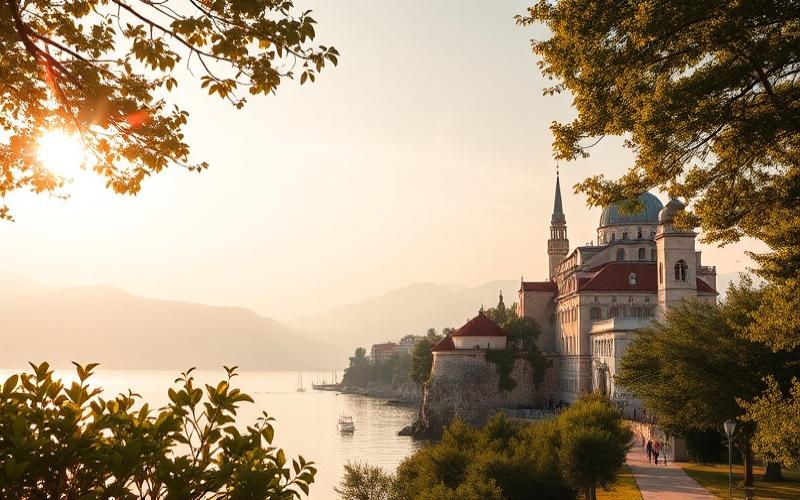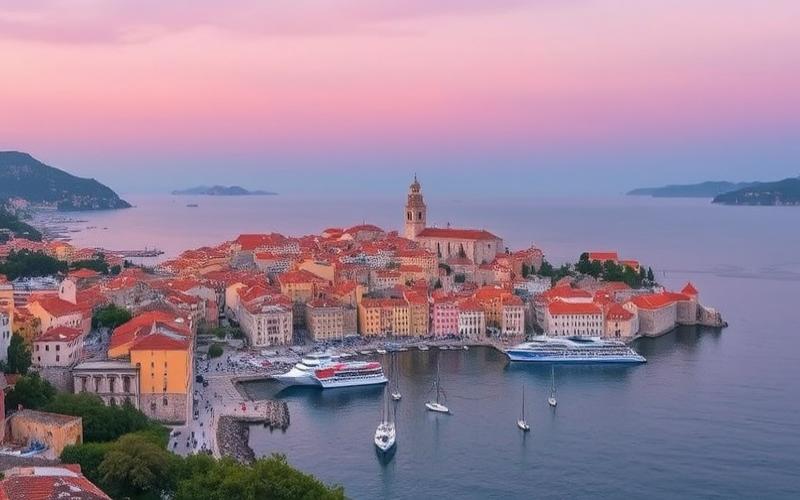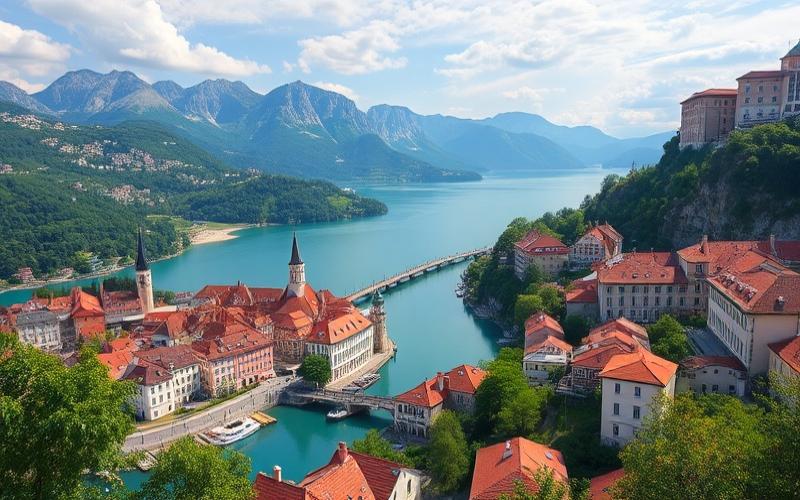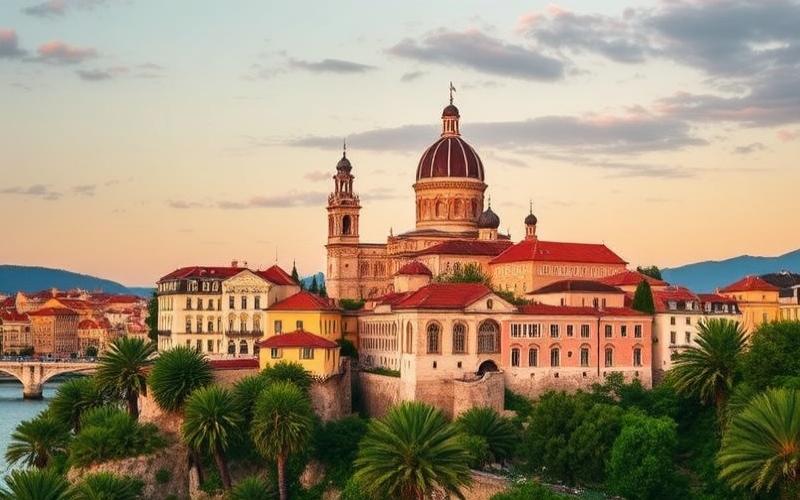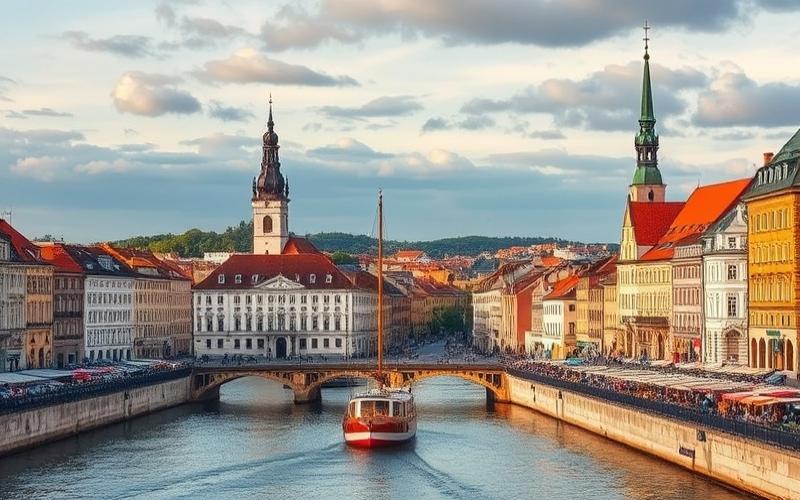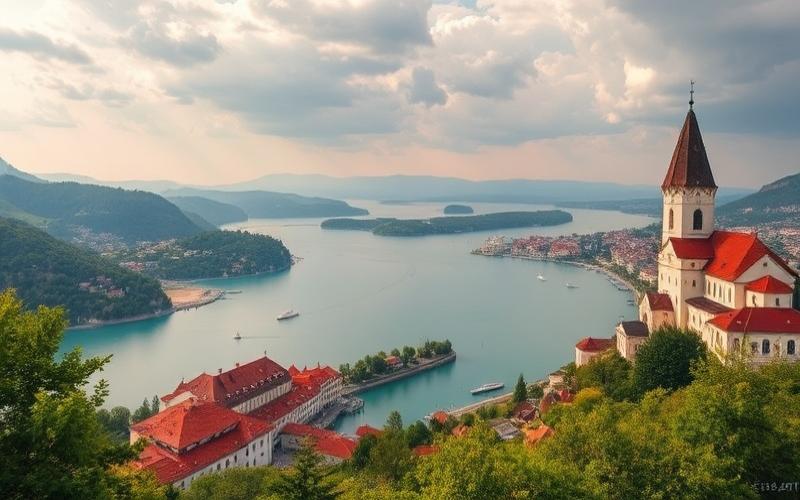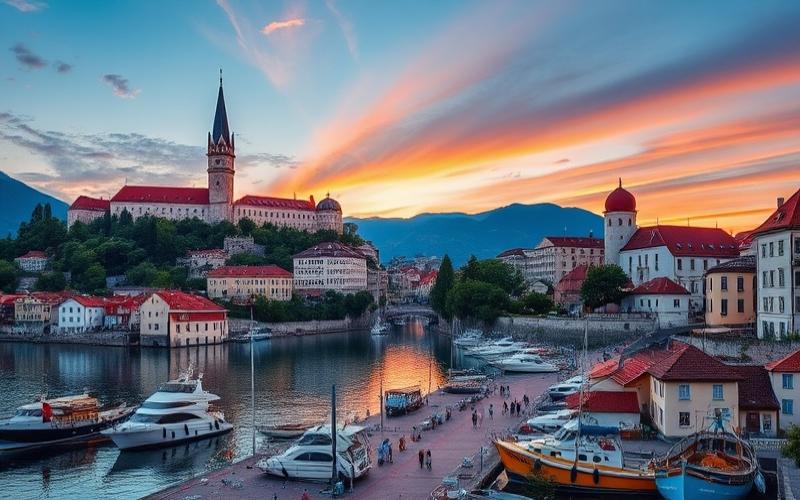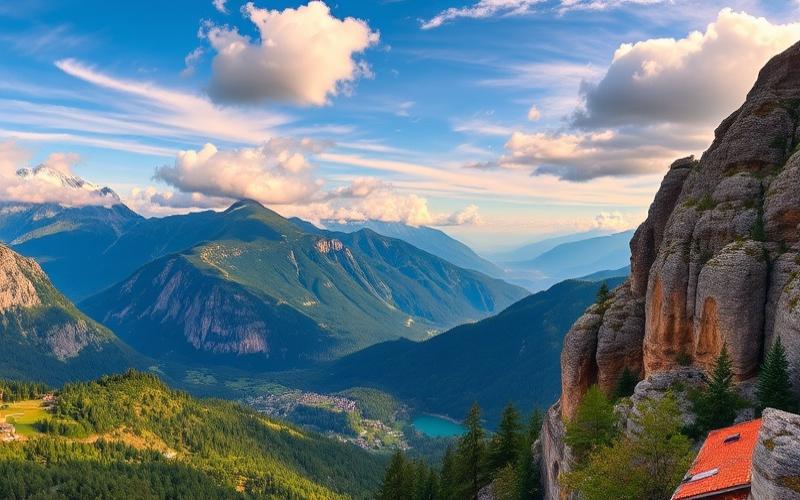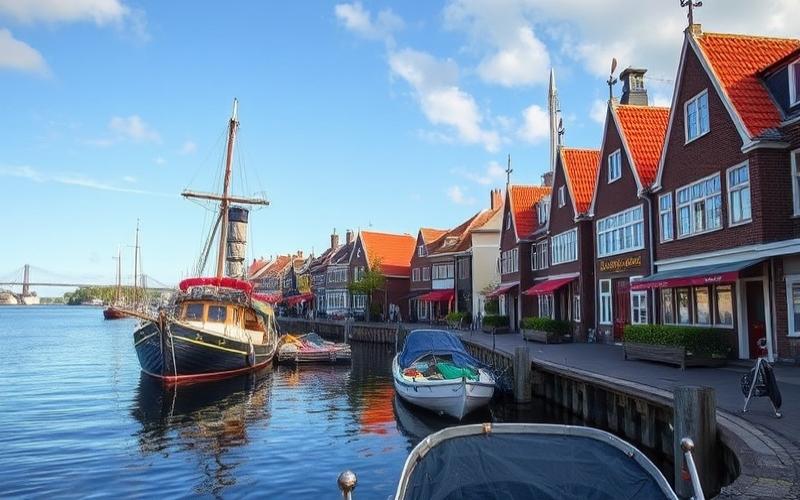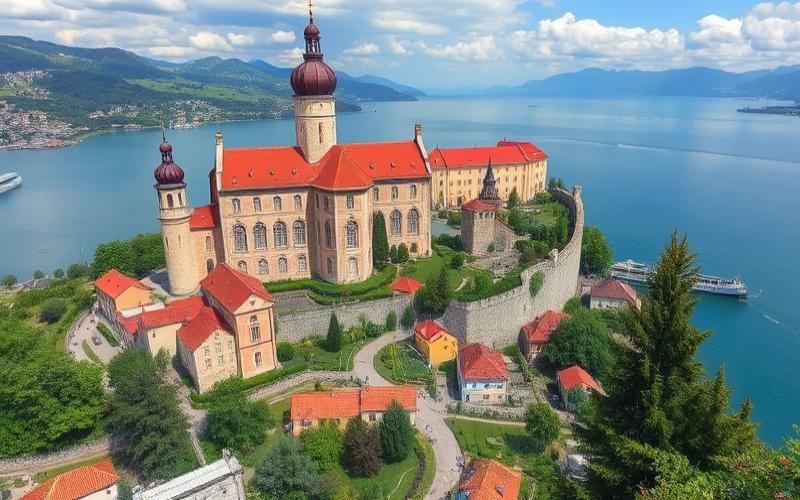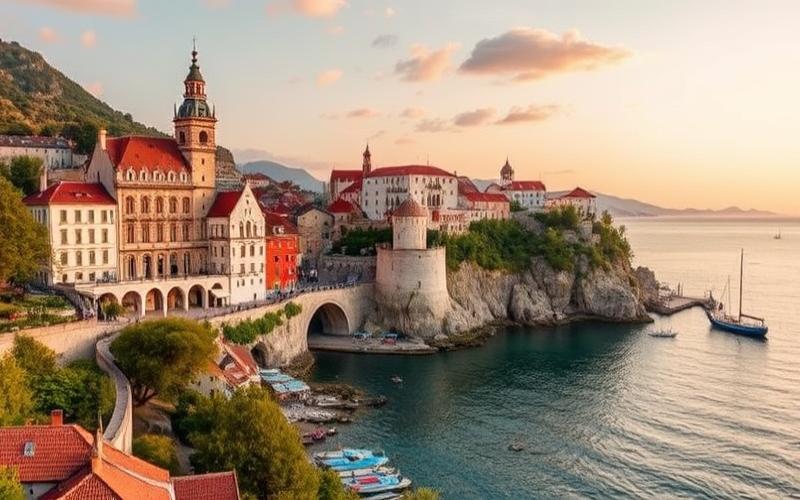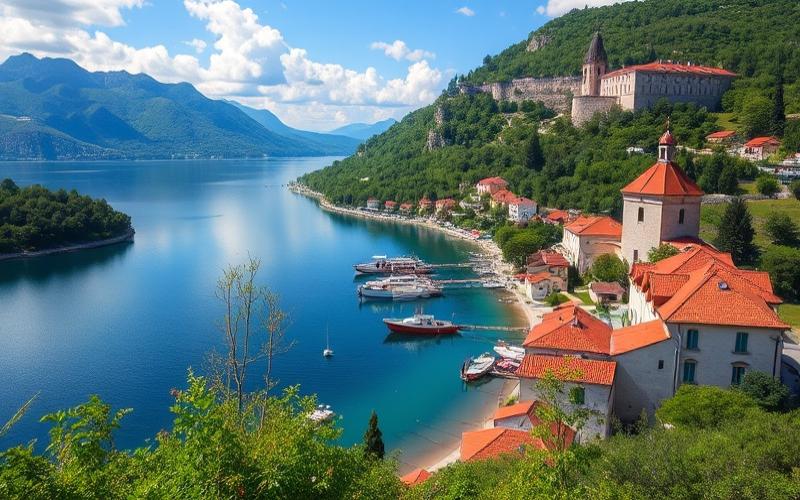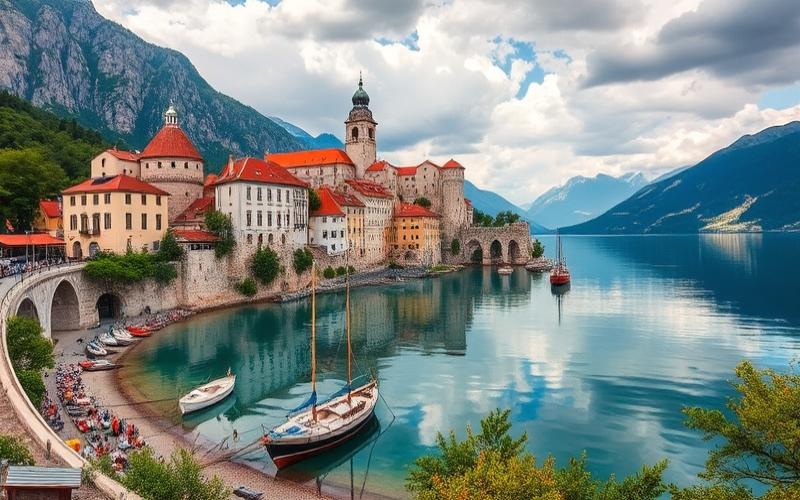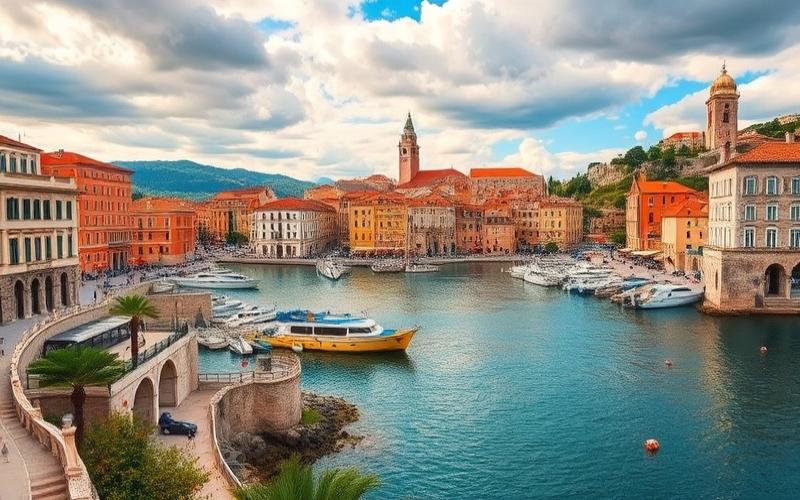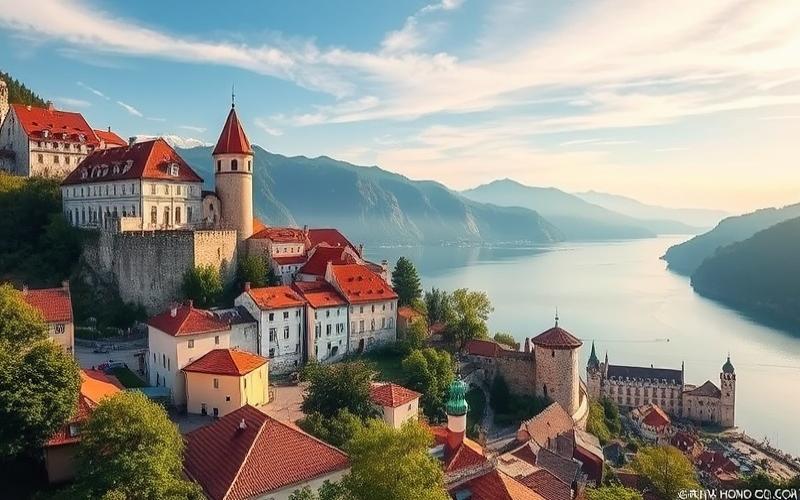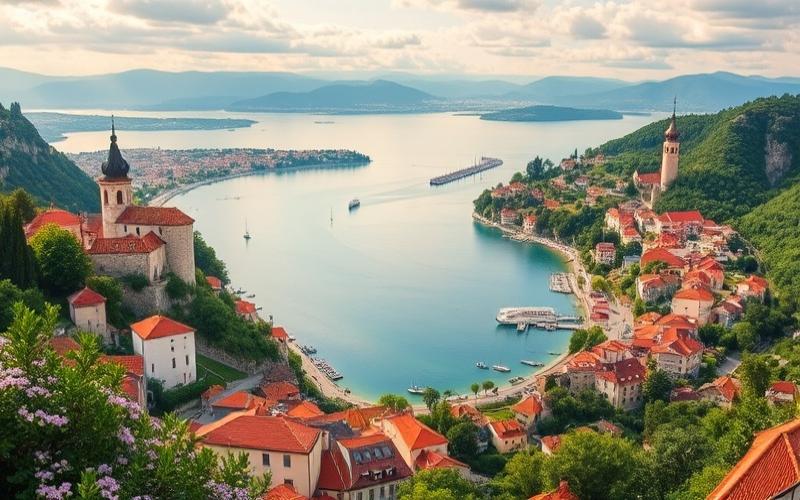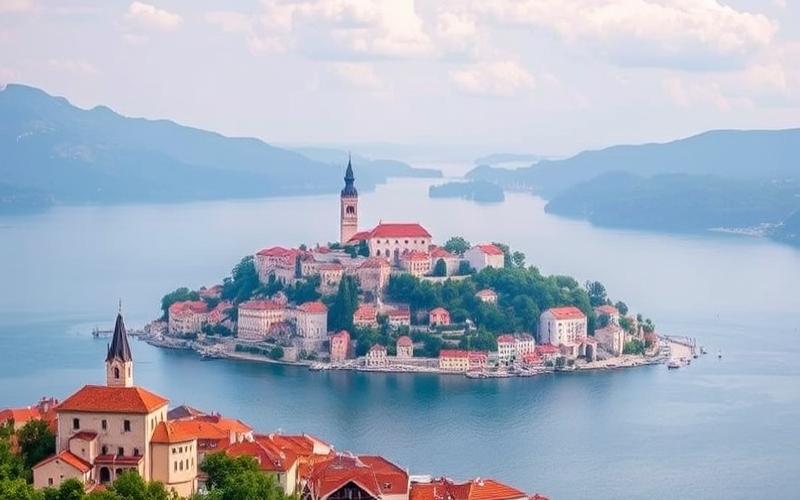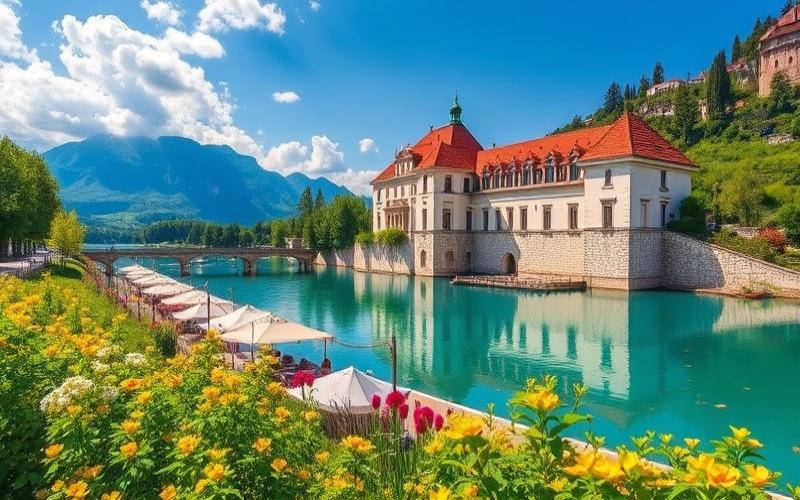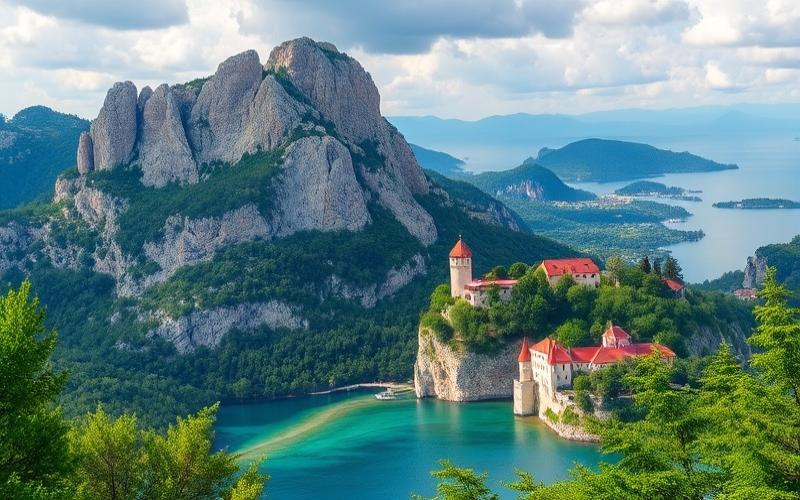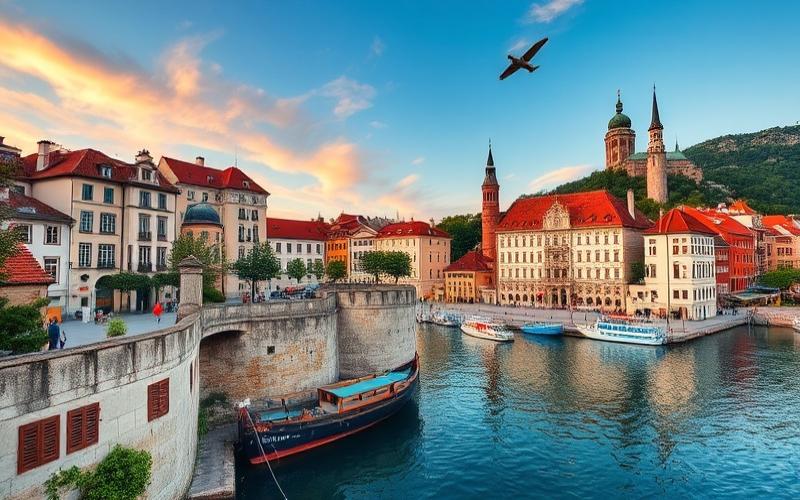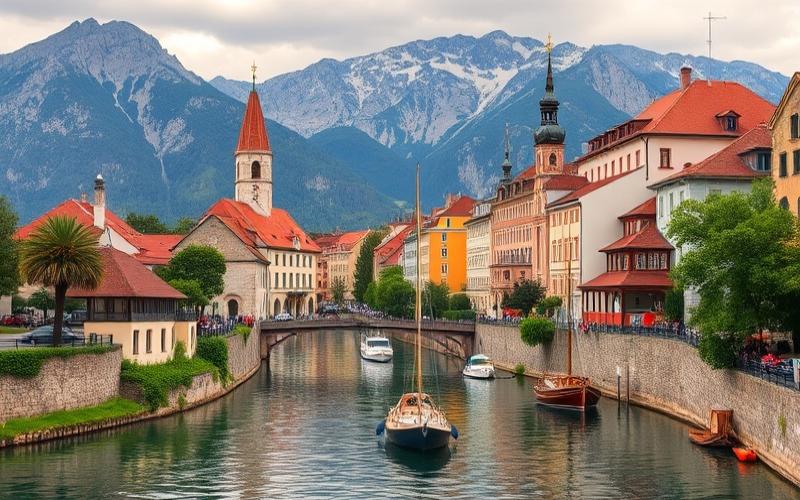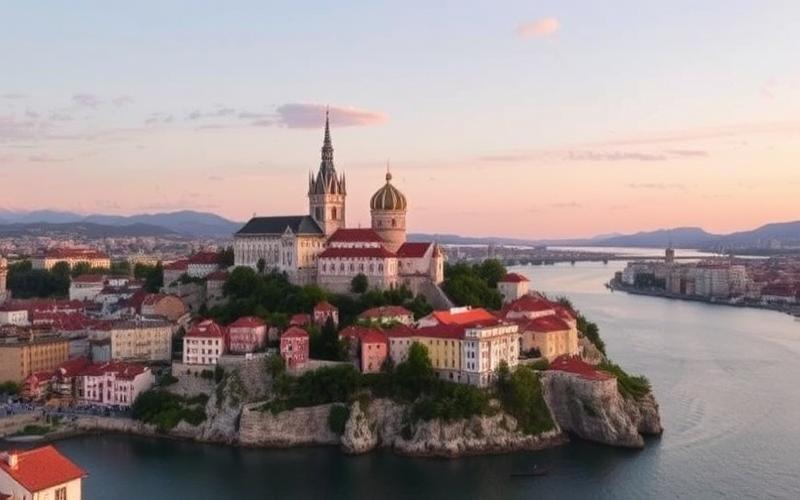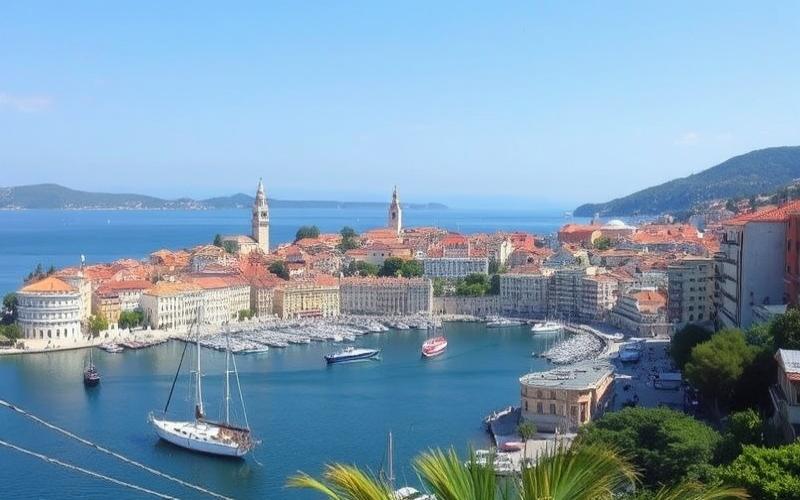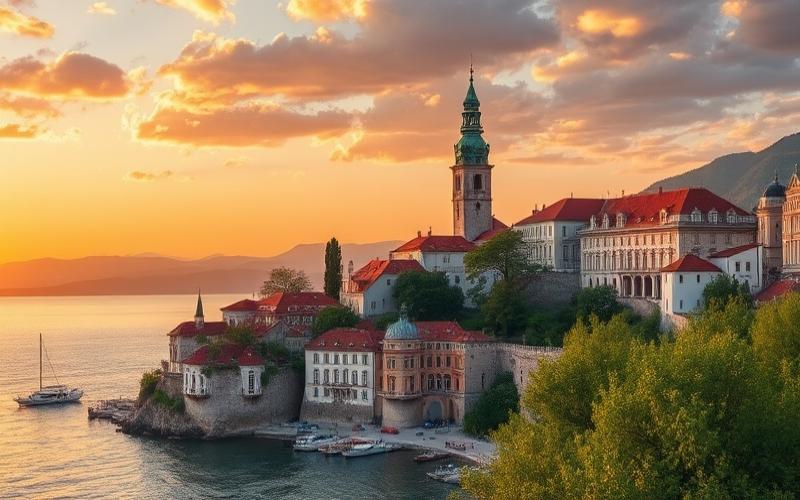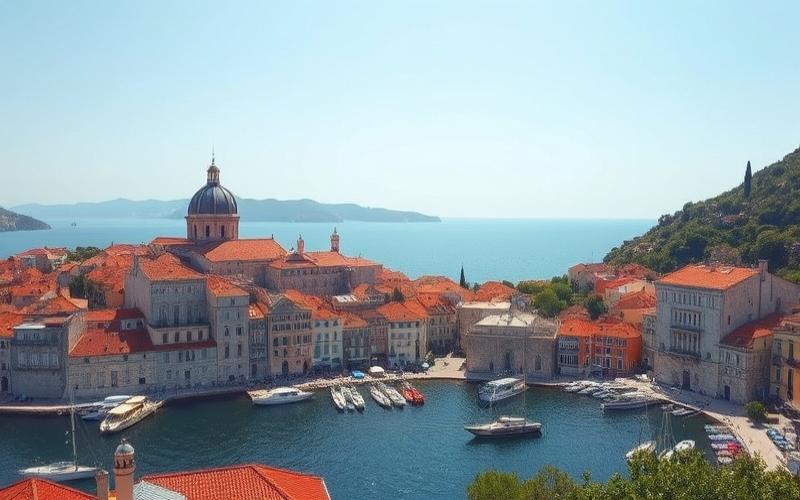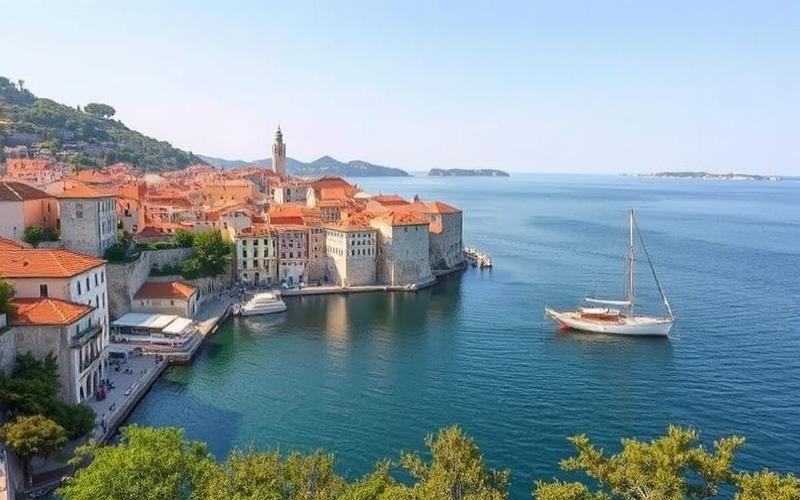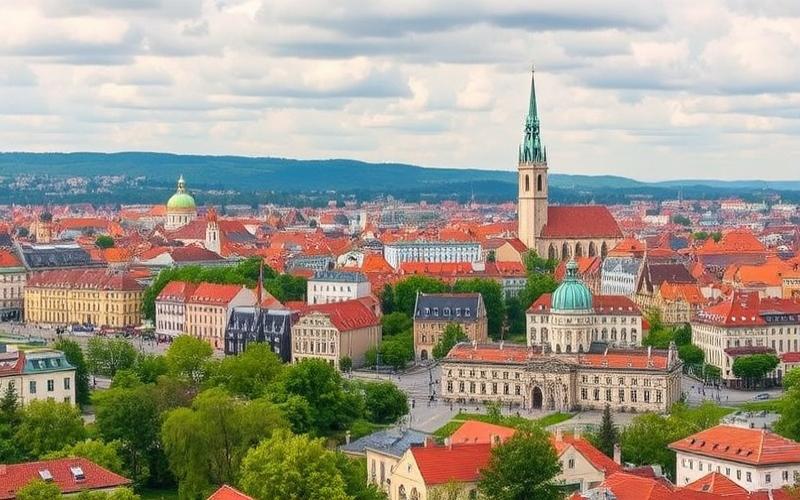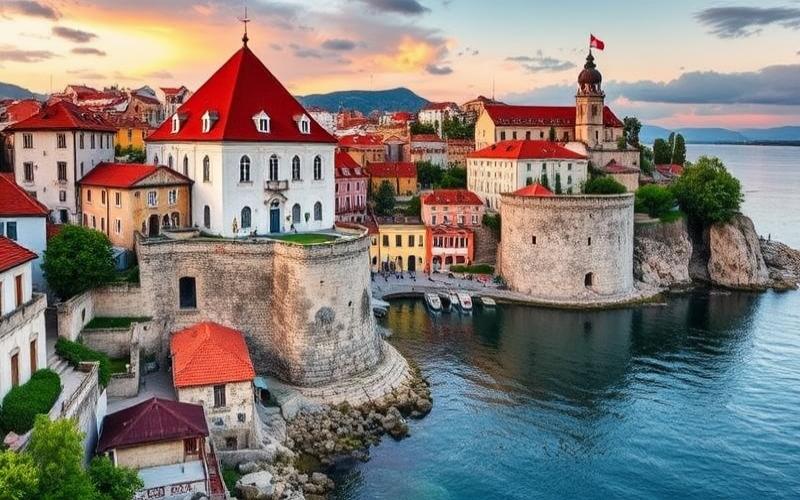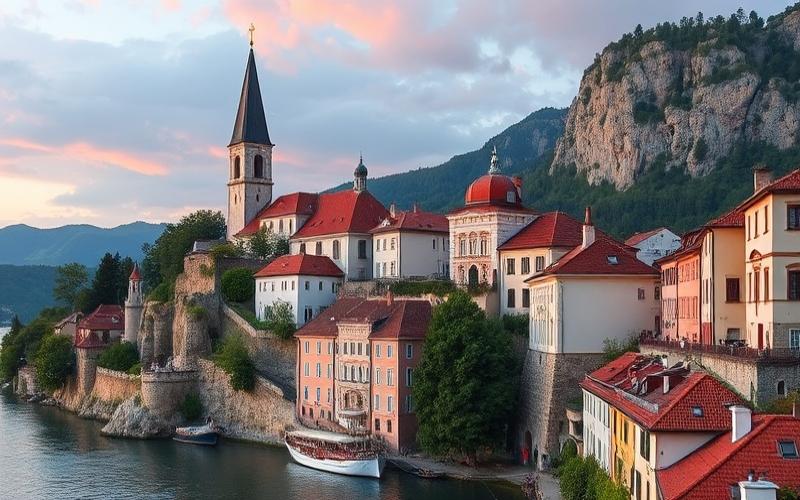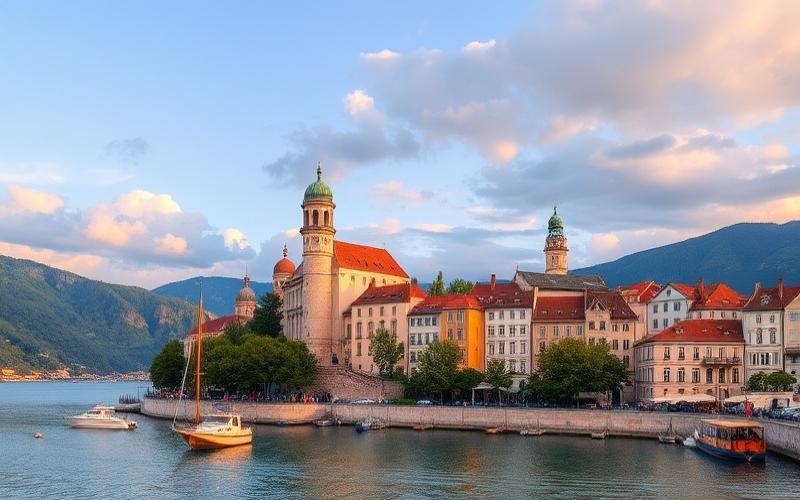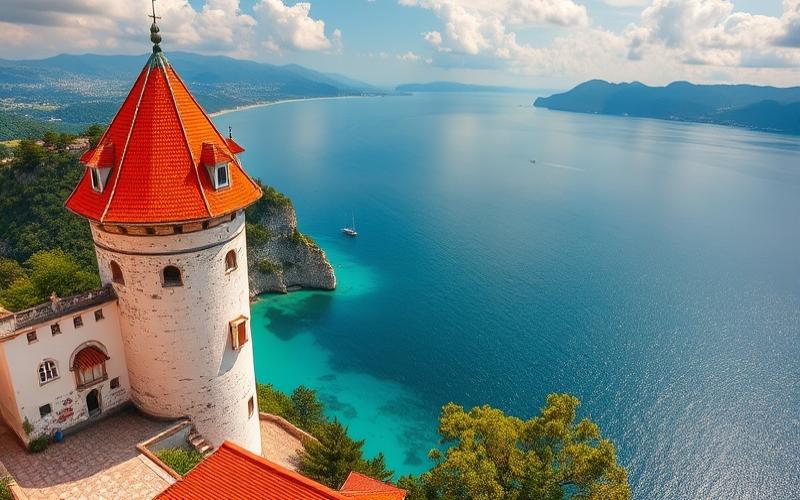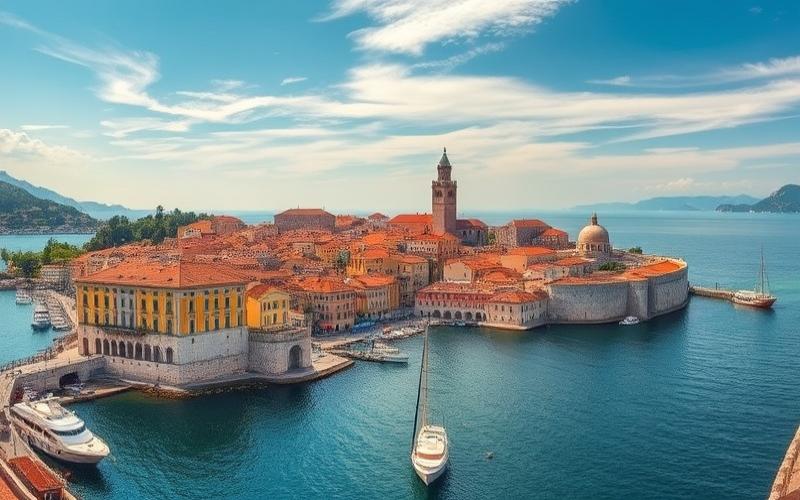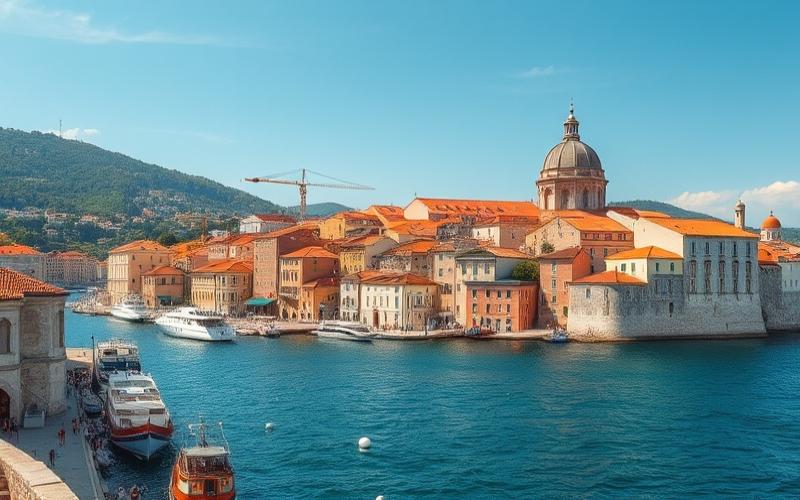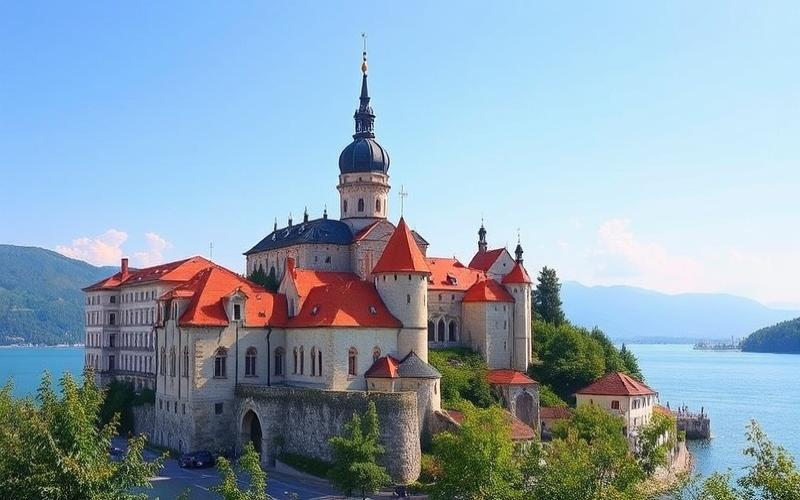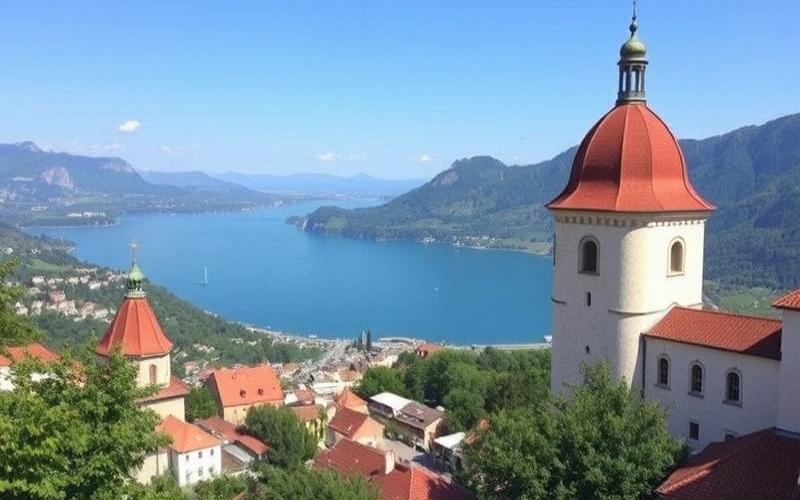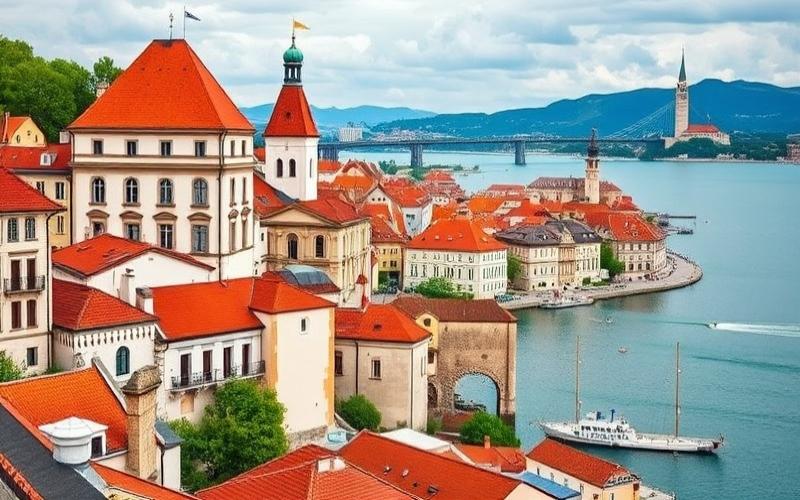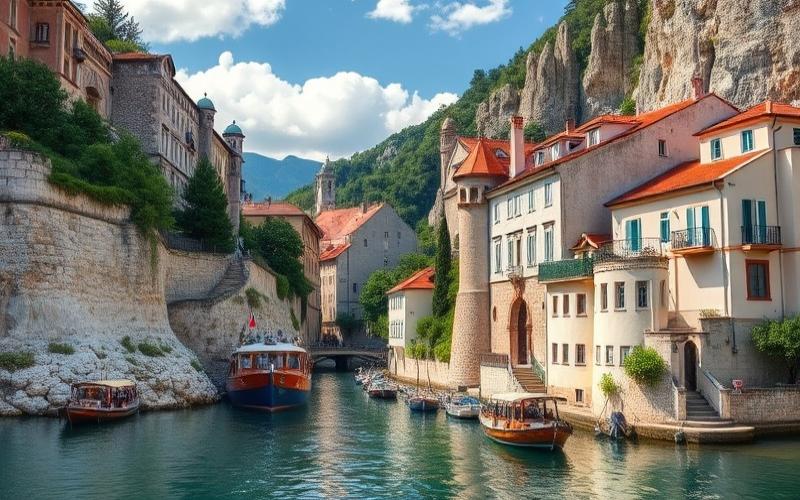
 Published on and written by Cyril Jarnias
Published on and written by Cyril Jarnias
Renovating a Property in Croatia
Renovating a property in Croatia is an exciting adventure that combines the charm of traditional architecture with modern potential. This country, rich in cultural heritage and picturesque landscapes, offers unique opportunities to transform an old home into a true haven of peace.
However, the renovation process requires an understanding of local regulations, careful planning, and consideration of varied climate conditions. By exploring different practical aspects, from sustainable materials to tips for maintaining authenticity, this article will guide you through each step to realize your dream project.
Good to Know:
Croatia imposes strict rules for renovating buildings classified as historical heritage. Always check the necessary permits before starting work.
Increasing the Value of Your Croatian Property
To enhance the appeal and value of your property in Croatia, several improvement areas are recommended, ranging from interior modernization to marketing strategy optimization.
Practical Tips to Enhance Your Property’s Value:
- Interior Modernization:
- Prioritize high-quality equipment (state-of-the-art appliances, premium finishes, modern bathrooms).
- Choose durable and aesthetic materials (solid wood, natural stone, glass).
- Opt for clean and contemporary decor, in harmony with the local architectural style.
- Landscaping and Exteriors:
- Create or renovate outdoor spaces (wooden decks, pergolas, lounge areas).
- Plant local species to enhance the natural setting while minimizing maintenance.
- Install a pool, hot tub, or wellness area, highly sought after in the Croatian market.
- Integration of Eco-Sustainable Elements:
- Install solar panels or a rainwater harvesting system.
- Use eco-friendly materials and high-performance insulation.
- Implement smart energy management systems (sensors, connected thermostats).
- Tips to Maximize Perceived Value:
- Add a home automation system (remote control of shutters, lights, heating).
- Optimize natural and artificial lighting to highlight the space.
- Renovate outdoor areas (summer kitchen, barbecue corner, designer furniture).
- Marketing and Visual Enhancement Strategy:
- Have professional photos taken to highlight the property’s assets.
- Use presentation videos or virtual tours to attract remote buyers.
- Emphasize key selling points in the listing: sea view, premium amenities, energy performance, proximity to tourist attractions.
| Improvement Area | Recommended Actions | Impact on Value |
|---|---|---|
| Interior Modernization | Premium equipment, quality finishes | Immediate increase |
| Landscaping | Deck, pool, local vegetation | Enhanced setting |
| Eco-Sustainable Elements | Solar, eco-friendly materials, home automation | Appeal to eco-conscious buyers |
| Renovated Outdoor Spaces | Summer kitchen, furniture, lighting | Visual appeal, conviviality |
| Visual Marketing | Professional photos, videos, virtual tour | Visibility, faster sale |
Key Takeaways:
- Focus on the quality and durability of improvements.
- Enhance the natural environment and local architecture.
- Incorporate modern and eco-friendly solutions to attract an international and demanding clientele.
- Pay attention to the property’s presentation, especially through professional visual media.
A carefully modernized property, with attractive exteriors and an effective marketing strategy, will stand out in the Croatian market and justify a higher value.
Good to Know:
To increase the value of your property in Croatia, start by modernizing the interior with high-quality equipment like contemporary kitchens and bathrooms, then enhance the exterior with well-designed landscaping that harmonizes with the natural setting. Integrate eco-sustainable elements, such as solar panels or water recovery systems, to appeal to environmentally conscious buyers. Adding home automation can also maximize the perceived value of the house, improving energy management and comfort. Also consider renovating attractive outdoor spaces, such as decks and pools, which boost visual appeal and conviviality. A compelling marketing strategy is essential; use professional photos in your listings to capture attention and provide an engaging glimpse of what your property has to offer.
Essential Steps to Succeed in Your Renovation
Essential Steps in the Renovation Process of a Property in Croatia:
1. Planning and Budgeting
- Define the renovation goals precisely: extension, modernization, historical restoration, etc.
- Establish a realistic budget including work costs, taxes, legal fees, contingencies, and a safety margin.
- Consider financing: local or international mortgages, personal funds.
- Account for the property’s market value and estimate renovation costs relative to expected added value.
2. Administrative Procedures Specific to Croatia
- Property and Land Title Verification: consult the land registry and check zoning (residential, agricultural, etc.).
- Obtaining Building Permits: submit an application to the Administrative Department for Construction and Spatial Planning.
- For non-EU nationals, obtain purchase approval from the Ministry of Justice before any renovation.
- Registration of Modifications: any significant changes must be reported and registered with local authorities and the cadastre.
- Hire a competent lawyer to ensure legal and administrative compliance.
3. Selecting Local Contractors
- Seek recommendations from real estate agents, lawyers, or local property owners.
- Request detailed quotes from multiple contractors, check their references and experience with similar projects.
- Prefer companies that respect deadlines and have liability insurance.
- Draft a precise contract including timelines, penalties for delays, and payment terms.
4. Compliance with Croatian Building Regulations
- Collaborate with a local architect or engineer to ensure compliance with structural and safety standards.
- Demolition or structural modification work must be approved by a licensed professional.
- Adhere to regulated disposal of rubble and construction waste to avoid fines.
5. Recommendations for Purchasing Construction Materials
- Prefer reputable local suppliers for material quality and availability.
- Compare prices and quality among different distributors.
- Seek advice from the contractor or architect on materials suitable for the Croatian climate and regulations.
- Verify the origin of materials, especially for historical properties (preserving original character).
6. Logistics Management, Timelines, and Coordination of Trades
- Establish a detailed work schedule and plan regular on-site meetings.
- Ensure smooth coordination among different workers: masons, electricians, plumbers, painters, etc.
- Allow for flexibility to handle unforeseen events (weather, delivery delays).
- Protect areas not involved in the work from dirt and damage.
| Step | Responsible Party | Estimated Timeline | Critical Points |
| Title/Zoning Verification | Lawyer/Real Estate Agent | 1-2 weeks | Legal Compliance |
| Permit/Compliance Acquisition | Lawyer/Architect | 1-3 months | Administrative Delays |
| Contractor Selection | Property Owner | 2-4 weeks | Quality, Timelines, Insurance |
| Work Start and Supervision | Contractor/Project Manager | Depending on Scope | Coordination, Deadline Adherence |
| Final Inspection and Control | Property Owner/Architect | 1 week | Compliance and Finishing Verification |
Practical Tips for the Final Phase and Managing Unforeseen Events:
- Conduct a thorough inspection with the architect and contractor before signing off on the work.
- Check the functionality of all installations (electricity, plumbing, heating).
- Request necessary warranties and certifications.
- Set aside a financial reserve for unforeseen events (10 to 15% of the budget).
- Document all steps and keep invoices, contracts, and correspondence.
- Be regularly present on-site or appoint a local representative to monitor progress.
To Remember:
The success of a renovation project in Croatia depends on rigorous planning, legal compliance, selecting reliable partners, and constant vigilance on-site.
Good to Know:
To successfully renovate a property in Croatia, start with meticulous planning and creating a realistic budget, considering local material and labor costs. Familiarize yourself with administrative procedures by obtaining the required building permits from local authorities, a step often overlooked but crucial. Select contractors with good knowledge of Croatian regulations to ensure your project’s compliance. Material quality is essential: prioritize those proven in Croatia for optimal durability. Good logistical oversight involves careful timeline management and effective coordination of different service providers. Finally, anticipate unforeseen events by setting aside an additional budget and conclude with a thorough verification of completed work to ensure compliance with local standards.
Secrets to Optimizing Your Budget and Financing
Initial Cost Assessment
Average purchase price of a standalone house near the sea: €150,000 to €400,000 depending on condition and location.
Additional fees to anticipate:
- Notary and registration fees: 0.01 to 0.05% of the contract price
- Official translator fees: approximately €200–300
- Real estate agency fees: typically around 3% of the price + VAT
- Property transfer tax: 3% of the market value (except purchases from a developer subject to VAT)
- VAT for purchases from a company: standard Croatian rate set at 25%
Additional purchase-related fees often reach about 7% of the total amount.
| Item | Percentage/Estimated Cost |
| Notary & Registration | 0.01–0.05% |
| Official Translator | ~€200–300 |
| Real Estate Agency | 3% + VAT |
| Property Transfer Tax | 3% |
| Other Fees | Variable |
Older properties often require significant work (structural restoration, exterior/interior renovation) but offer high potential once renovated.
Obtaining and Comparing Local Quotes
- Request detailed quotes from several local suppliers for each category (structural work, finishes, technical installations).
- Systematically compare offers in terms of:
- Quality of proposed materials
- Execution timelines
- Insurance or warranties offered by local companies
Practical checklist to get the best prices:
- Solicit at least three comparative quotes per work category.
- Ensure each quote includes all possible additional costs (transport, temporary storage…).
Financing Options Available in Croatia
List of common solutions:
- Local mortgages offered by Croatian banks to residents and non-residents.
- Generally requires a personal contribution and precise case analysis.
- National or regional renovation grants for energy efficiency or cultural heritage.
- May take the form of tax credits or temporary reduction in property taxes.
- Recommended consultation with a financial advisor specialized in Croatian real estate.
- Allows for tax optimization and legal security during transactions.
Concrete Strategies to Optimize the Budget and Save Money
Optimized list:
- Purchase certain materials directly in bulk from regional suppliers.
- More advantageous prices than from specialized distributors.
- Maximize the use of qualified local labor.
- Significant reduction in logistical costs and better knowledge of local regulations.
- Meticulously plan the overall schedule:
- Avoid overlaps between trades that cause delays/unexpected costs
- Anticipate administrative delays to avoid penalties or costly immobilizations
Optimizing your project involves rigorous planning from the budget stage, precise comparisons between providers, and strategic use of national financing while essentialy surrounding yourself with experienced professionals in local real estate law.
Additional Key Points
- Inquire with local authorities about all available tax incentives before starting construction.
- Hiring a specialized lawyer ensures legal compliance throughout the process.
Good to Know:
To optimize your budget when renovating a property in Croatia, start with a thorough assessment of purchase and renovation costs, and obtain detailed, comparative quotes from local suppliers. Explore financing options like Croatian mortgages and check eligibility for potential grants. It is crucial to consult a financial advisor or lawyer specialized in Croatian real estate to navigate these steps. You can save money by purchasing materials in bulk or opting for local resources. A well-planned schedule will help avoid unexpected costs, while comparing costs and services will increase your savings.
Choosing the Perfect Materials for Your Project
Climate and Environment
Croatia has significant climate variations between the Adriatic coast (Mediterranean, hot dry summers, mild wet winters) and the interior (continental climate, harsh winters, hot summers).
Humidity is particularly present on the coast, requiring the choice of materials resistant to corrosion, mold, and condensation.
Recommended Materials:
- Brac Stone: excellent resistance to humidity, high thermal inertia, traditionally used on the coast.
- Treated Wood: suitable for temperature variations if well protected against humidity.
- Ceramic and Terracotta: ideal for floors and roofs, easy to maintain, resistant to humidity.
- Lime Plasters: breathable, limit condensation and mold proliferation.
Local Regulations
Croatia requires compliance with strict energy standards for renovations, particularly under the National Energy and Climate Plan (target of 36.4% renewable energy by 2030).
Materials must meet thermal performance and fire safety criteria.
Renovations in historic centers often mandate the use of traditional materials to preserve local aesthetics.
Aesthetics and Culture
Integrating materials into the local architecture is essential to maintain the Croatian character:
- Brac Stone: iconic for Dalmatian facades.
- Wood: used for frames, shutters, floors.
- Ceramic with Dalmatian Patterns: frequently used for roofs and decorative elements.
Practical examples:
An architect in Split recommends local limestone for exterior walls, combined with terracotta tiles for roofs to respect regional identity while ensuring good insulation.
| Material | Traditional Use | Technical Advantages | Local Aesthetics |
|---|---|---|---|
| Brac Stone | Facades, Walls | Humidity Resistance, Durable | Very High |
| Treated Local Wood | Frames, Floors | Insulating, Warm Aesthetic | High |
| Ceramic/Terracotta | Roofs, Floors | Easy Maintenance, Resistant | High |
Durability and Ecology
Prioritize materials with low carbon impact, local and recyclable, to reduce ecological footprint:
- Natural stone, certified wood, bio-based insulation (wood wool, cork).
Green roofs and permeable pavers improve insulation, limit runoff, and integrate into an ecological approach.
Cost and Availability
Costs vary significantly by region:
- On the coast and islands: higher prices, starting from €2,500/m² for work and materials.
- Inland: generally lower costs (from €1,500/m²).
Local materials (stone, regional wood) offer a good quality-price ratio and are more readily available than imported materials.
Testimony from a Dubrovnik contractor: “Using local stone and traditional tiles reduces supply delays and respects the budget, while enhancing heritage.”
Resilience
Croatia is exposed to seismic risks (notably Zagreb) and flooding on the coast.
Suitable Materials:
- Cut stone and reinforced concrete for resistance to shocks.
- Permeable pavers and vegetated roofs to limit flood effects.
- Monitoring sensors and anti-flood barrier systems in the most exposed areas.
Example: In Zadar, after floods, renovations now include waterproof coatings and permeable surfaces, validated by local engineers.
To Remember
To renovate effectively in Croatia, it is crucial to combine traditional local materials, respect for energy standards, and modern technical solutions for resilience against climatic and natural hazards. Support from local professionals ensures compliance and quality of renovations while enhancing Croatian architectural identity.
Good to Know:
When renovating a property in Croatia, the choice of materials is crucial to handle diverse climate conditions, notably humidity and temperature variations, by prioritizing resistant materials like Brac stone and local woods. It is essential to respect Croatian regulations on energy performance and material safety, while integrating aesthetic elements that harmonize with traditional architecture, such as ceramic with Dalmatian patterns. Opting for durable and eco-friendly materials can reduce the project’s carbon footprint, and by exploring local alternatives, you can get a good quality-price ratio. Also ensure that chosen materials are resistant to earthquakes and floods, given natural risks in some regions. Finally, advice from local professionals can guide you toward suitable solutions that combine respect for traditions and contemporary innovations.
Disclaimer: The information provided on this website is for informational purposes only and does not constitute financial, legal, or professional advice. We encourage you to consult qualified experts before making any investment, real estate, or expatriation decisions. Although we strive to maintain up-to-date and accurate information, we do not guarantee the completeness, accuracy, or timeliness of the proposed content. As investment and expatriation involve risks, we disclaim any liability for potential losses or damages arising from the use of this site. Your use of this site confirms your acceptance of these terms and your understanding of the associated risks.

